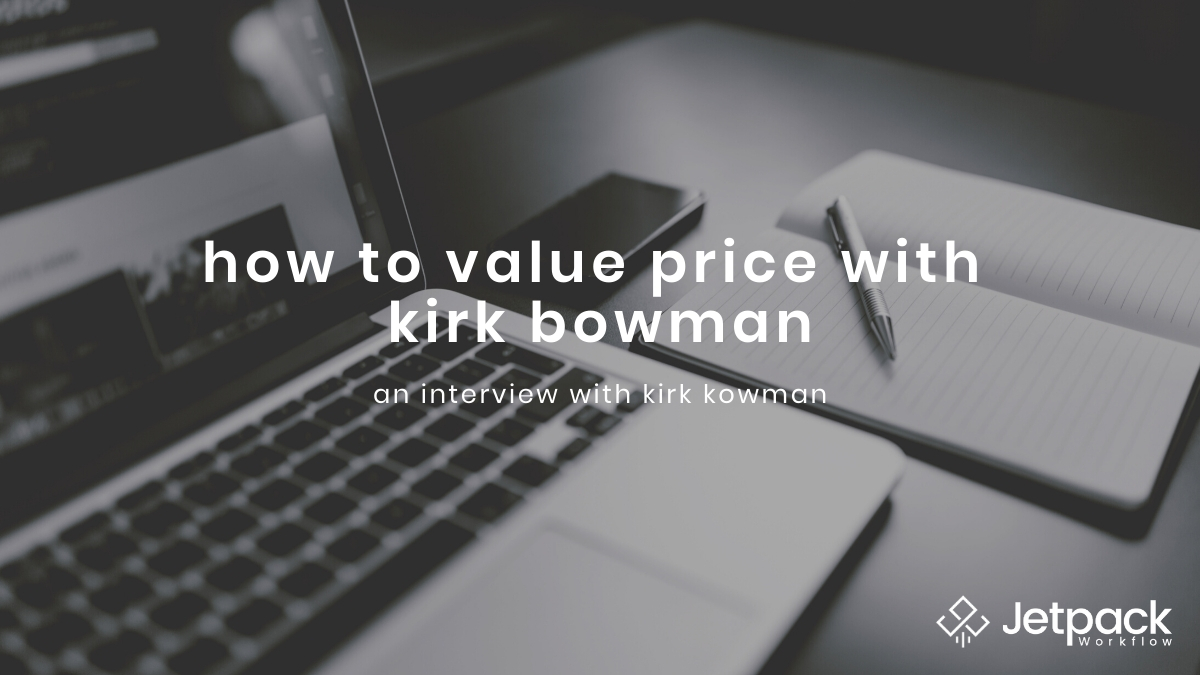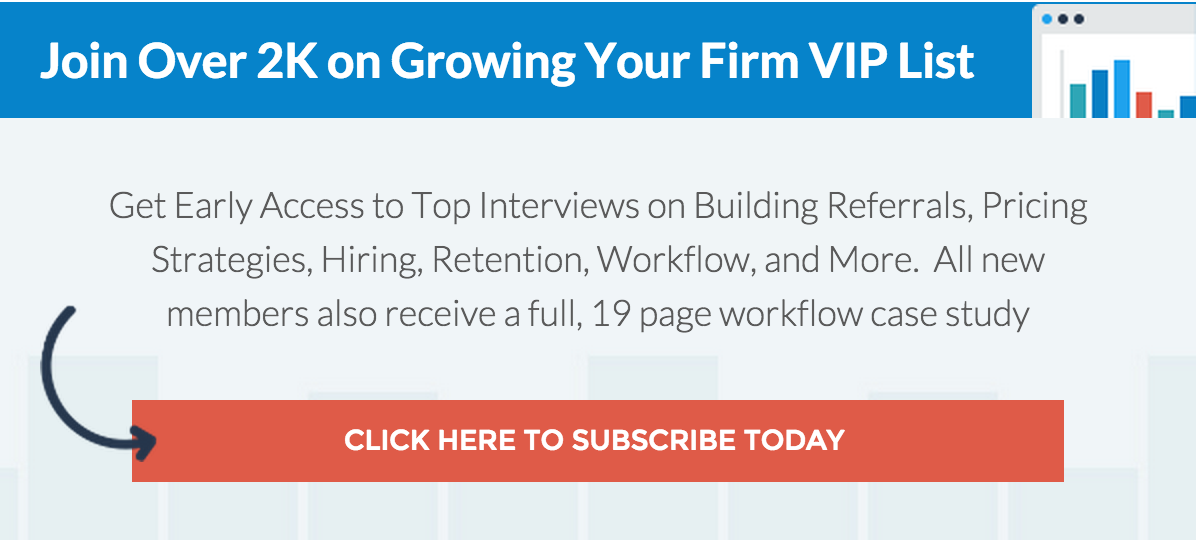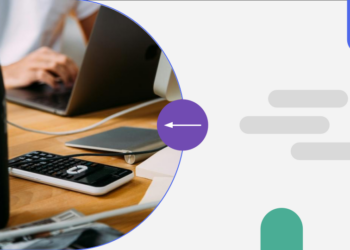How To Value Price with Kirk Bowman

Kirk Bowman is the go-man when you need to find out how to value price. Value pricing allows you to ditch time sheets and costly administrative work.
Kirk is the host and visionary of value at the Art of Value podcast, as well as the owner of MightData LLC, and practicing fellow at VeraSage
In this interview, we cover:
1. How to create multiple packages and offerings for a service
2. How to strategically and thoughtfully interview a client
3. The common mistake firms make around “the money conversation” (and how to avoid it)
4. How to include the client in the conversation when defining the scope
5. How to value price and measure success
And much more
Click Below To Listen to the Full Interview:
Show Links:
Art of Value
Connect with Kirk on Linkedin
Follow Art of Value of Twitter
How to move into value based billing (interview)
Enjoy the post? Feel Free to Share with a Colleague
Here’s the Value Accountants Provide:
Kirk Bowman has been talking about value pricing for years. Still, too many accounting firms resign themselves to pricing by the hour. One argument accountants make about value pricing — “Well, we provide a commodity. Our work is law. If business owners didn’t have to do taxes, they wouldn’t need us.”
Not true. You provide more value than you know.
The key is to uncover it. Your first step today? Talk with your top clients. Which clients have you heard the highest praise from? Which do you know you provided maximum value for?
Sit down with them. Offer to buy them lunch. Ask the client point blank “What value do we provide you as an accounting firm?”
You’ll get a perspective you never expected. The answers you get will give you further insight into how to provide value for other clients.
An important thing to note — you want to discuss only with clients who fit your ideal profile and you want to see more of. This process is important because you could turn poor clients into great clients. Plus, you’ll learn how to screen potential bad clients before you sign them.
You might feel uncomfortable at first approaching a client about this. “What if they say no? What if they feel insulted?” Most likely your trusty client will be more than happy to help you out.
To make it kick off on the right foot — do everything in your power so the client is comfortable.
Here’s what you do:
- Ask questions
- Listen 80% of time
- Write down important points
Approach the client with the mind of a child. Be ‘naively curious.’ No question is dumb or off-limits. Again, you’ll be surprised at things you’ll uncover.
DAVID’S TIP: When we started Jetpack Workflow, we first needed to find the problems at CPA firms. We interviewed hundreds of folks and asked dumb questions at the beginning. You have to do this in order to understand the business.
How to Value Price:
So, how do you actually value price your services?
First, you must understand that you will feel fear. In the accounting industry, we all like to default to the status quo. Introducing a new way to price is downright scary at times.
Fear is the enemy of value.
During the process, you may get angry or upset clients answering. That is okay. You learn from it and move on to the next value conversation. Sometimes an uncomfortable answer is simply because you didn’t ask the question right. Or, you might not have timed the question right. You should have left it for later.
Your second step is to ‘discover’ what value the client wants. Value defines the scope of the project. The scope must be clear to the client in order to value price. The client must get value when they expect it. When you deliver value when the client expects, they are happy to pay your fees.
The tendency is to rush through the discovery of value because it can feel uncomfortable, even tedious at times. But, what Kirk’s found is that most companies undervalue their services.
When you define the value to the client, then deliver that value, you put yourself into an excellent position where you can raise your fees.
The initial discovery phase could be a paid engagement in itself, Kirk believes. It depends on the scope of work and how in-depth the discovery could go. If you sense it’s a smaller engagement, the discovery would probably be free.
When Do You Reveal the Price?
The actual price of service should always be pushed to the end. If a prospect wants to play hardball and push you, you’re fine to give a wide ballpark. However, good clients will let you run through your process. A bad client might only be looking for a “cost.” And you’ll notice the wording, Kirk says. When you hear words like “cost” or “expense,” your client doesn’t see you as an investment.
Meaning, they don’t see the full value, but only the sunk cost and commodity. The discovery conversation takes away from this.
The drawback to ‘budget ranges’ you provide, the client only hears the low number! If you say “ballpark is $5 – 10k” they hear “$5k”. If it’s too early, tell them “it’s too early.”
When you finally reach the point of offering price, Kirk believes wholeheartedly in offering ‘options.’ Different options allow you to present different angles of value.
Also, it allows you to introduce new services the client may want.
Frankly, the client should know what’s coming in the proposal. It’s the price they won’t know. However, in some of the more expensive packages, you can offer more premium services you didn’t touch on. But, there should be a basic package with all the pieces you already discussed with the prospect.
Kirk also recommends presenting the proposal to them LIVE and not just email it to them. You want it to be a conversation.
In 95% of Kirk’s cases, he offered options. On the 5% he didn’t, he says it was a big mistake.
To build your packages, have at least 2-3. Have a basic package, a more advanced package, and at least one package that is a ‘level-up’ from what they asked you. Always offer more than they need. They will appreciate it. Offering this might invoke an entirely new value conversation.
DAVID’S TIP: I had a consulting agreement offer. I don’t do these much, but I wanted to help. Their budget was much lower than I thought. However, rather than pitching them right at the budget, I offered them a more premium option with more benefits. Surprisingly, they took the higher offer! You just never know.
What’s holding you back from offering options? Kirk just showed you how to value price. Take small steps now!










